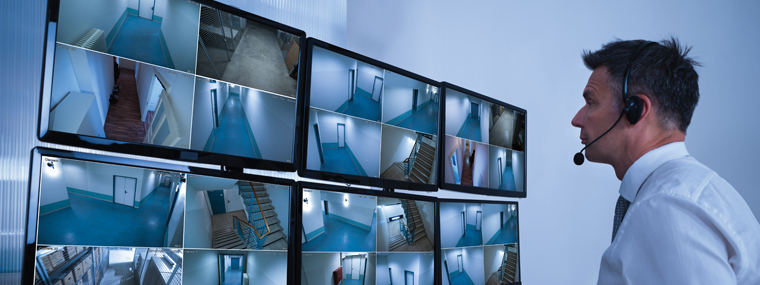
Frequently Asked Questions
How Can a Non-Gated Community Be Secured?
The Options and Methods Available For Open Entrances and Amenities
By Brie Peterson / Published June 2018

For many communities, adding gates to the entrance points and fencing around the property perimeter is not an option. This can be a result of county regulations or permitting restrictions, or perhaps the majority of residents do not want to undertake the associated costs. Whatever the reason may be, often these communities feel that they are vulnerable and that their property is not well protected. However, there are security options and measures available that can be designed to address these security gaps, many of which can prevent, detect, respond to, or help recover evidence related to incidents within a non-gated community.
To start, communities should address their open entrance points. Without a gate, anyone can drive into or pass through the neighborhood. To keep better records of who is entering and exiting the community, one helpful investment is license plate cameras. These can be placed to capture the tag of every vehicle entering and exiting a community. If an incident occurs within a community, the association now has the ability to retrieve the license plates of every vehicle that entered and exited the community around the time of the event.
If an additional camera or two capture the overall entrance area, it is likely that vehicle makes and models will also be recorded. This can provide a community with supplementary evidence of the parties who may be involved in suspicious activity. Overall, cameras are also constantly recording for continuous surveillance at the designated area.
If a non-gated community is interested in installing surveillance cameras at the entrance points, there is an important factor that also needs to be addressed. Who will retrieve the video of events? Some security providers include video retrieval services in addition to installation. When a community chooses to go with an all-inclusive security provider, the company should check the cameras regularly to ensure they are working properly, archive the video for a certain time period, and supply the watermarked video when notified by the association that an incident occurred.
Non-gated communities can also take preventative measures to protect their amenities, such as pools, clubhouses, fitness centers, sports courts, and more. Access control is an important measure for a community to control who has access to an area and when. Distributing unique credentials to the authorized users is the first step in deterring non-residents from using community assets. Without the key fob, card, or other form of credential, unwanted visitors cannot be granted access to an area with access control security. Communities can also limit the times that admittance will be granted to an area. That way, if an amenity closes at a certain time, access will be disabled until the area re-opens.
Managing a community database for authorized access control users can be time-consuming and overwhelming. If an association is considering this type of system, a designated person or service provider should manage who does and does not have access. Some companies will use a consolidated database for ease in issuing and deactivating access credentials. This means that when a resident moves away, the service provider can easily discontinue that resident’s credential that may have allowed access to multiple areas from the single database.
An added surveillance option can give a community proactive security for amenities during closed hours. It is typically called active video surveillance. This type of system combines video analytics with smart cameras to actively monitor an area when it is closed. If a person enters the amenity area after hours, the video analytics will track the person’s movement while notifying a guard located remotely. That guard has the capability to then voice down and tell the trespasser that the area is closed.
Even when an amenity area is not fenced in, such as a playground, an active video surveillance system can monitor a distinguished area that is programmed into the camera. It works similar to an invisible trip line. Part of what makes this type of system so effective is that it encompasses all four factors for an efficient security system—prevention, detection, response, and evidence.
Non-gated communities do not have to be left defenseless. Even with an open entrance, certain cameras can assist with monitoring the traffic in and out of the community. Plus, an access control system can deter unauthorized users from entering a community building or amenity. If access control cannot be used or does not stop someone at night, specialized smart cameras can actively oversee areas that need be kept clear of trespassers while closed. These couple of video surveillance systems along with access control security can greatly strengthen a community’s security plan while making a community less susceptible to crime and other incidents.
If you have security questions or concerns, please email ask@enverasystems.com.
Brie Peterson
Sr. Business Development Consultant for Envera Systems
Brie Peterson is the Sr. Business Development Consultant for Envera Systems. She works closely with the sales and marketing departments to provide best-in-class service to the communities that Envera works with. Envera Systems specializes in security technology systems with remote guards to replace or enhance guards at communities. Contact info: (855) 380-1274 or www.EnveraSystems.com.


